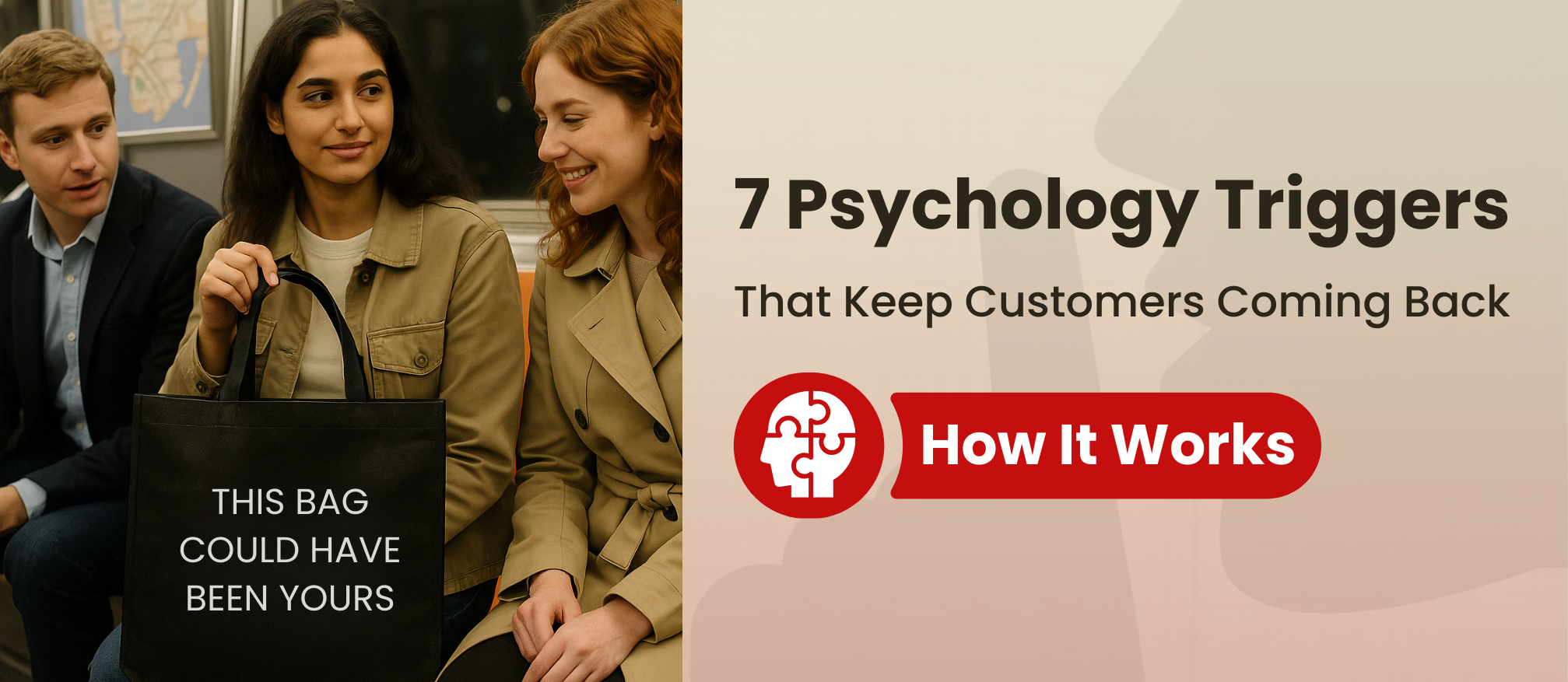Most retailers look at bags as a line item, a necessary cost to move goods out of the store. But what if the same bag could quietly shape customer behaviour, strengthen brand loyalty, and turn everyday shoppers into walking advertisers?
The answer isn’t just in design or material. It’s in psychology. Reusable bags don’t just carry products; they carry meaning. And meaning changes everything. They tap into human behaviour in ways most retailers underestimate.
1. Perceived Value
Customers instinctively place more value on something that feels durable, stylish, or premium. A reinforced handle or thicker material might add only a few cents to the cost, but it changes perception. People hesitate to throw away what feels “too good to waste.” That single design upgrade means a bag will be used dozens of times, multiplying its lifespan and extending brand visibility far beyond the store.
2. Everyday Billboards
Unlike packaging that gets discarded within minutes, reusable bags enter a customer’s daily routine. They show up in offices, gyms, car boots, and kitchens. Each use turns the bag into a mobile advertisement. Psychologists call this the “mere exposure effect” — the more people see a brand, the more familiar and trustworthy it becomes.
Research shows that a reusable bag is used between 50 and 150 times, creating 5,000+ impressions over its lifetime. That makes these products more than packaging; they’re marketing assets with staying power.
3. Identity and Belonging
Carrying a branded reusable bag has become a subtle cultural signal. For some, it communicates environmental responsibility. For others, it aligns them with a retailer they admire. People use brands to project identity, and a well-designed bag functions like a badge of belonging. It’s not just about convenience — it’s about saying, “this is who I am, and this is where I shop.”
4. Memory Anchors
Bags don’t just hold items — they hold reminders. Every time a customer grabs their bag before shopping, they’re prompted to think of the store it came from. Over time, this repetition forms a subconscious habit. Instead of asking, “Where should I shop today?” their brain has already been nudged by your brand. That mental shortcut keeps them coming back, often without even realising why.
5. Reward Loops
Some retailers incentivise reusable bag use with discounts or loyalty points. But the deeper psychology is that people love rewards for “doing the right thing.” Using a bag feels like a small win — a positive action that gets reinforced each time. The bag itself becomes tied to that reward loop, making it more likely that customers continue both the behaviour and the shopping habit.
6. Storytelling in Design
A plain bag carries groceries. A thoughtfully designed one tells a story. Whether it features a seasonal theme, a local landmark, or bold artwork, a bag that sparks conversation gets reused more. Customers often treat these designs as collectables. That emotional attachment increases the bag’s lifespan and keeps the retailer’s brand circulating in homes and communities.
7. Shared Visibility
Unlike most forms of advertising, bags are public-facing in the most natural way. A customer might walk through a crowded shopping street with your branding on full display. This type of peer-to-peer visibility is powerful because it’s non-intrusive and authentic. People tend to trust what they see others using. In many cases, the customer carrying your bag is doing the marketing for you.
Closing Thought
Reusable bags aren’t just packaging — they are psychological tools that influence behaviour, memory, and loyalty. Retailers who understand these triggers don’t see bags as an expense. They see them as one of the most effective, low-cost marketing assets they can deploy.
The next time you think about your bag program, ask yourself: Is this a throwaway, or is it a product customers will proudly carry, reuse, and remember?

